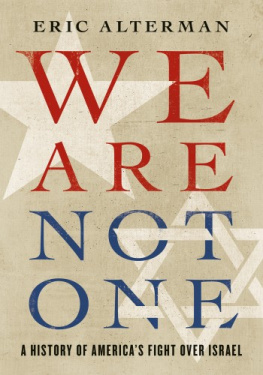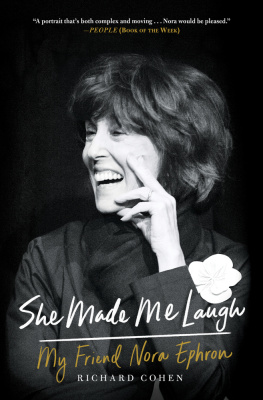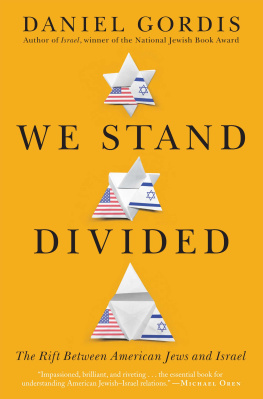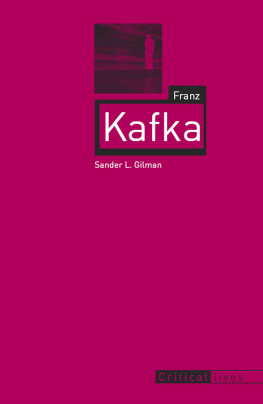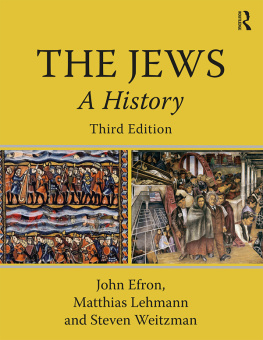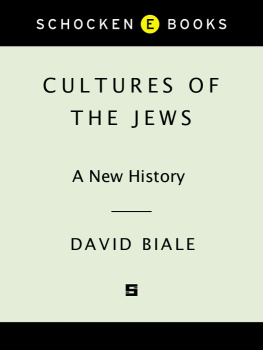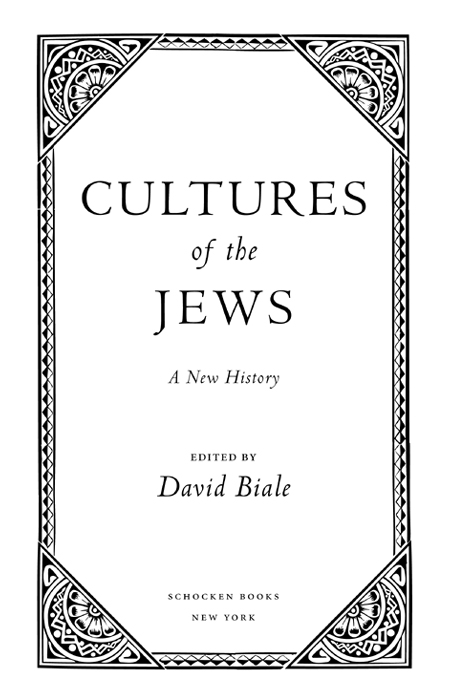Copyright 2002 by David Biale
All rights reserved under International and Pan-American Copyright Conventions. Published in the United States by Schocken Books, a division of Random House, Inc., New York, and simultaneously in Canada by Random House of Canada Limited, Toronto. Distributed by Pantheon Books, a division of Random House, Inc., New York.
Schocken and colophon are registered trademarks of Random House, Inc.
Grateful acknowledgment is made to the following for permission to reprint previously published material:
The Sheep Meadow Press: Poem Tefillin from Wild Light: Selected Poems of Yona Wallach, translated by Linda Zisquit. Reprinted by permission of Sheep Meadow Press, Riverdale-on-Hudson, New York.
Steerforth Press: Excerpt from Infiltration by Yehoshua Kenaz. Reprinted by permission of Steerforth Press, S. Royalton, VT., www.steerforth.com.
Library of Congress Cataloging-in-Publication Data
Cultures of the Jews : a new history / edited by David Biale.
p. cm.
Includes bibliographical references (p.).
eISBN: 978-0-307-48346-1
1. JewsHistory. 2. JewsCivilization. 3. JudaismHistory.
I. Biale, David, 1949
DS 102.95 . C 85 2002 909.04924dc21 2002023008
www.schocken.com
v3.1
In memoriam
AMOS FUNKENSTEIN, JACOB KATZ, AND GEORGE MOSSE
PIONEERS AND MENTORS IN THE STUDY OF JEWISH CULTURE
CONTENTS
Preface: Toward a Cultural History of the Jews
by David Biale
Part One
MEDITERRANEAN ORIGINS
Introduction
by David Biale
ONE Imagining the Birth of Ancient Israel: National Metaphors in the Bible
by Ilana Pardes
TWO Israel Among the Nations: Biblical Culture in the Ancient Near East
by Ronald S. Hendel
THREE Hellenistic Judaism
by Erich S. Gruen
FOUR Jewish Culture in Greco-Roman Palestine
by Eric M. Meyers
FIVE Confronting a Christian Empire: Jewish Culture in the World of Byzantium
by Oded Irshai
SIX Babylonian Rabbinic Culture
by Isaiah Gafni
SEVEN Jewish Culture in the Formative Period of Islam
by Reuven Firestone
Part Two
DIVERSITIES OF DIASPORA
Introduction
by David Biale
ONE Merchants and Intellectuals, Rabbis and Poets: Judeo-Arabic Culture in the Golden Age of Islam
by Raymond P. Scheindlin
TWO A Letter to a Wayward Teacher: The Transformations of Sephardic Culture in Christian Iberia
by Benjamin R. Gampel
THREE A Jewish-Christian Symbiosis: The Culture of Early Ashkenaz
by Ivan G. Marcus
FOUR Innovative Tradition: Jewish Culture in the Polish-Lithuanian Commonwealth
by Moshe Rosman
FIVE Families and Their Fortunes: The Jews of Early Modern Italy
by Elliott Horowitz
SIX Bom Judesmo: The Western Sephardic Diaspora
by Yosef Kaplan
SEVEN Childbirth and Magic: Jewish Folklore and Material Culture
by Shalom Sabar
Part Three
MODERN ENCOUNTERS
Introduction
by David Biale
ONE Urban Visibility and Biblical Visions: Jewish Culture in Western and Central Europe in the Modern Age
by Richard I. Cohen
TWO A Journey Between Worlds: East European Jewish Culture from the Partitions of Poland to the Holocaust
by David Biale
THREE The Ottoman Diaspora: The Rise and Fall of Ladino Literary Culture
by Aron Rodrigue
FOUR Multicultural Visions: The Cultural Tapestry of the Jews of North Africa
by Lucette Valensi
FIVE Challenges to Tradition: Jewish Cultures in Yemen, Iraq, Iran, Afghanistan, and Bukhara
by Yosef Tobi
SIX Religious Interplay on an African Stage: Ethiopian Jews in Christian Ethiopia
by Hagar Salamon
SEVEN Locus and Language: Hebrew Culture in Israel, 18901990
by Ariel Hirschfeld
EIGHT The Other Israel: Folk Cultures in the Modern State of Israel
by Eli Yassif
NINE Declarations of Independence: American Jewish Culture in the Twentieth Century
by Stephen J. Whitfield
Conclusion
by David Biale
ACKNOWLEDGMENTS
The contributors to this work deserve the greatest thanks, not only for their own contributions but also for serving as equal partners with the editor, assisting in the selection of other contributors, and making invaluable suggestions to improve the work as a whole. Meeting twice as the project evolvedonce in Berkeley at an early stage and later in Jerusalemthe authors read and criticized one anothers chapters in a quest to find common ground without stifling individual voices. Rare it is in the humanistic disciplines that scholars, instead of working in isolation, come together for a shared purpose.
A special session at the 2001 World Congress of Jewish Studies in Jerusalem, organized at the initiative of Moshe Rosman, produced a lively debate over the works governing hypotheses about Jewish culture. In the context of that session, Moshes perceptive and critical reading of my general introduction contributed greatly toward refining that portion of the manuscript.
The origins of this work go back to a telephone conversation in 1995 with Arthur Samuelson, then the editor-in-chief of Schocken Books. Together, we developed the basic outlines of the project. Arthur participated as a full equal in the first conference of contributors and made a signal contribution by encouraging the authors to envision an audience beyond the academy. Arthur was succeeded some years later by Susan Ralston, who played no less important an editorial role. Susan entered the scene as the contributors submitted their chapters and her razor-sharp editors pencil turned academic prose into much more accessible writing. Her advice, support, and good humor were indispensable in producing a coherent book from what had been piles of pages.
The members of the Editorial Advisory Board, whose names are listed elsewhere in this book, made many useful suggestions at different stages of the projects development. Two of them, William Brinner and Steven Zipperstein, deserve to be singled out for contributions beyond the call of duty, including reading and commenting on some of the chapters.
Abe Socher served as the projects editorial assistant and made many valuable comments on early drafts of chapters. Joe Socher did yeomans duty as source checker. Julia Johnson Zafferanos careful copyediting assured consistency in spelling and style throughout the manuscript. Dassi Zeidel, at Schocken, coordinated much of the project, including the collection of illustrations. Susan Smith and Kathleen van Sickle deserve special thanks for their assistance in preparing the manuscripts. Carol Cosman translated Lucette Valensis chapter from French, Murray Rosovsky translated Yosef Tobis from Hebrew, and Azzan Yadin translated Ariel Hirschfelds chapter, also from Hebrew.
Two foundations supported this work. The Koret Foundation of San Francisco helped underwrite the conferences that brought the contributors together. The Maurice Amado Foundation of Los Angeles subsidized the chapters on Sephardic, North African, and Middle Eastern Jewish cultures.



